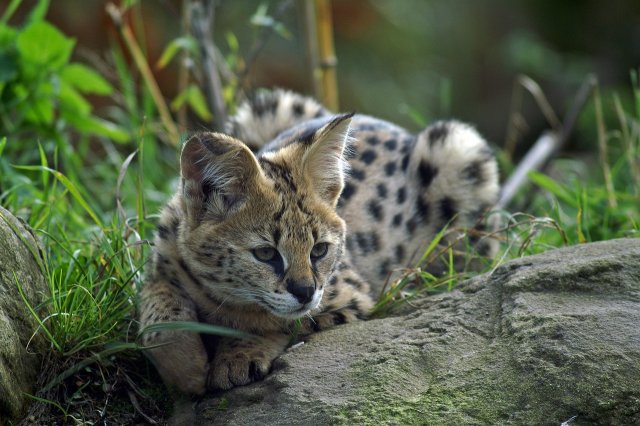The Graceful Beauty of Serval Cats
Unveiling the Enchanting Allure of Graceful Beauty
Serval cats, with their striking appearance and elegant movements, have captivated the hearts of many animal lovers around the world. These wild felines, native to Africa, possess a unique combination of physical features and behaviors that make them truly fascinating creatures. In this article, we will explore the graceful beauty of serval cats, shedding light on their appearance, habitat, hunting techniques, and conservation status.
The Appearance of Serval Cats
One cannot help but be mesmerized by the distinctive appearance of serval cats. They have a slender body, long legs, and a small head in proportion to their body size. Their most prominent feature is their large, rounded ears, which are highly sensitive and can rotate independently to detect even the slightest sound. These ears, combined with their excellent eyesight, make serval cats exceptional hunters.
Their coat is another striking aspect of their appearance. Serval cats have a short, dense coat that is typically golden-yellow with black spots. This unique pattern helps them blend into their grassland habitat, providing them with effective camouflage while stalking their prey.
The Habitat of Serval Cats
Serval cats are primarily found in the grasslands and wetlands of sub-Saharan Africa. They have adapted to various habitats, including savannas, marshes, and even mountainous regions. These versatile felines are known for their ability to thrive in both wet and dry environments.
Water plays a crucial role in the lives of serval cats. They are excellent swimmers and are often seen wading through shallow water in search of prey. Their long legs and webbed toes enable them to navigate through marshy areas with ease.
Hunting Techniques of Serval Cats
Serval cats are skilled hunters, relying on their agility and acute senses to catch their prey. They have a unique hunting technique that sets them apart from other feline species. Unlike lions or cheetahs, serval cats are not built for speed. Instead, they employ a strategy known as “pounce hunting.”
When hunting, serval cats use their exceptional hearing to locate small mammals, birds, and reptiles hiding in the grass. Once they detect their prey, they crouch low to the ground and slowly approach, using their long legs to leap high into the air. With remarkable precision, they pounce on their target, capturing it with their sharp claws.
Studies have shown that serval cats have a success rate of around 50% when hunting. Their ability to catch prey is attributed to their excellent hearing, keen eyesight, and their unique hunting technique.
Conservation Status of Serval Cats
Despite their captivating beauty, serval cats face numerous threats in the wild. Habitat loss due to human activities, such as agriculture and urbanization, poses a significant risk to their survival. Additionally, they are often hunted for their fur and body parts, which are used in traditional medicine.
 The International Union for Conservation of Nature (IUCN) lists serval cats as a species of “Least Concern” on the Red List of Threatened Species. However, this does not mean they are entirely safe from extinction. It is crucial to raise awareness about the importance of protecting their habitats and implementing conservation measures to ensure their long-term survival.
The International Union for Conservation of Nature (IUCN) lists serval cats as a species of “Least Concern” on the Red List of Threatened Species. However, this does not mean they are entirely safe from extinction. It is crucial to raise awareness about the importance of protecting their habitats and implementing conservation measures to ensure their long-term survival.
Conclusion
Graceful Beauty:
Serval cats are truly remarkable creatures, showcasing the beauty and grace of the animal kingdom. Their unique appearance, habitat adaptability, and hunting techniques make them a fascinating species to study and admire. However, it is essential to recognize the threats they face and take action to protect their habitats and ensure their continued existence in the wild. By appreciating the graceful beauty of serval cats and supporting conservation efforts, we can contribute to the preservation of these magnificent creatures for future generations to enjoy.
Read More About Servals From Wikipedia




